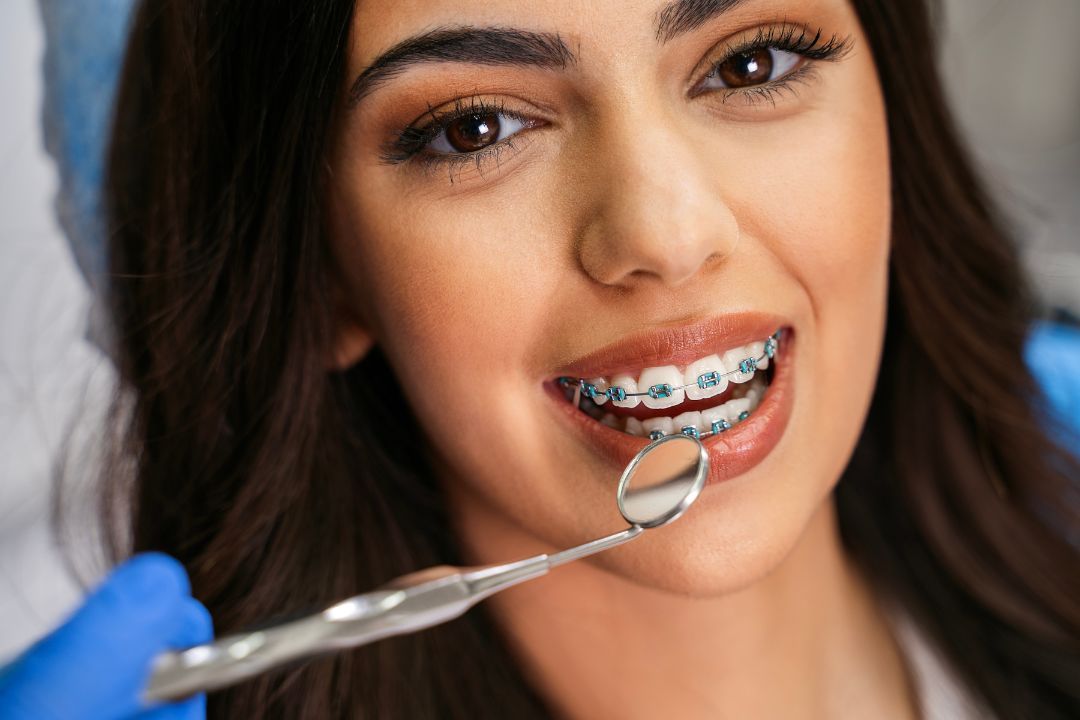For many people considering orthodontic treatment, understanding how metal braces work can make the process more approachable and less mysterious. Whether you’re beginning your journey or researching options, knowing the science behind metal braces can help you appreciate the technology and biology involved. If you’re looking into metal braces in Dubai, this article will break down the key concepts that explain how these devices gradually transform your smile.
The Basics of Tooth Movement:
Metal braces straighten teeth by applying gentle, consistent pressure that encourages teeth to move through the bone. This process is called orthodontic tooth movement and relies on the body’s natural ability to remodel bone tissue. When pressure is applied to one side of a tooth, bone cells called osteoclasts break down bone tissue, allowing the tooth to move into the new position. On the opposite side, osteoblasts build new bone to stabilize the tooth in its new location.
Components of Metal Braces:
Metal braces consist of several parts working together to apply controlled force:
- Brackets: Small metal pieces bonded to each tooth
- Archwire: A thin metal wire threaded through brackets that provides the force
- Ligatures: Elastic bands or wires that hold the archwire to the brackets
- Bands: Metal rings fitted around molars for additional support
These components work as a system to guide teeth into proper alignment over time.
How Pressure Is Applied:
The archwire is carefully shaped and adjusted by the orthodontist to exert pressure on teeth. When the wire tries to return to its original shape, it pulls or pushes the teeth accordingly. This force is mild but continuous, ensuring steady movement without damaging the teeth or surrounding tissue. Regular adjustments during orthodontic visits modify the pressure to maintain progress throughout treatment.
Bone Remodeling and Cellular Activity:
Tooth movement depends on the biological process of bone remodeling. When braces apply pressure:
- Osteoclasts resorb bone on the side where the tooth is moving toward
- Osteoblasts form new bone behind the moving tooth
- This balanced activity ensures teeth shift safely without losing support
This cellular process usually takes days to weeks, which is why orthodontic adjustments are spaced several weeks apart to allow remodeling.
Role of the Periodontal Ligament:
The periodontal ligament (PDL) is a flexible tissue that connects teeth to the jawbone and absorbs mechanical forces during tooth movement. When braces apply pressure, the PDL stretches on one side and compresses on the other, triggering bone remodeling. The PDL also contains nerves and blood vessels that help maintain tooth health and detect excessive pressure to prevent damage.
Importance of Patient Compliance:
While the science behind metal braces is highly effective, patient cooperation is crucial. Avoiding hard or sticky foods, maintaining oral hygiene, and attending regular orthodontic appointments ensure that braces function correctly and reduce treatment time. In Dubai, many clinics emphasize patient education alongside treatment to maximize outcomes.
Duration and Effectiveness of Treatment:
The average time for metal braces treatment ranges from 18 months to 3 years, depending on the complexity of the case. The science of tooth movement is gradual because bone remodeling takes time to safely shift teeth without causing harm. Regular checkups allow orthodontists to monitor progress and make precise adjustments, helping patients achieve optimal results.
Technological Advances in Metal Braces:
Recent improvements in materials and techniques have enhanced how metal braces work. For example, nickel-titanium archwires provide consistent, gentle forces due to their shape-memory properties. Advances in bracket design minimize discomfort and improve aesthetics, making metal braces more appealing. Clinics offering metal braces in Dubai often use these modern technologies for more efficient and comfortable treatments.
Benefits of Understanding the Science:
Knowing how metal braces straighten teeth can motivate patients to stick to treatment plans and care routines. Understanding the biology behind movement reassures patients that discomfort is temporary and purposeful. It also highlights the importance of following orthodontist instructions to support healthy remodeling and achieve the desired smile.
Final Thoughts:
Metal braces rely on a fascinating combination of mechanical force and biological response to straighten teeth safely and effectively. If you’re considering metal braces in Dubai, understanding this science can empower you to take an active role in your treatment and care. With patience, proper hygiene, and regular orthodontic visits, the gradual movement of teeth through bone remodeling leads to a healthier, beautifully aligned smile.






Comments